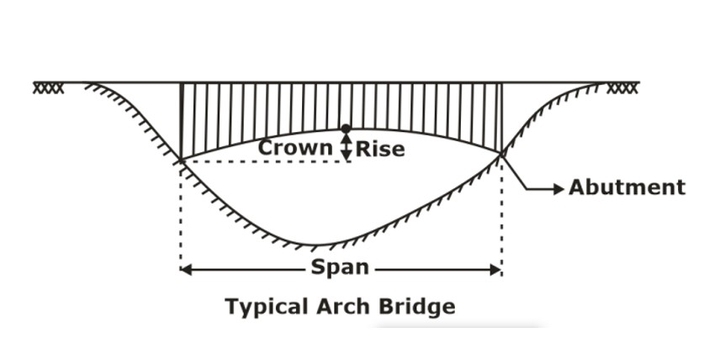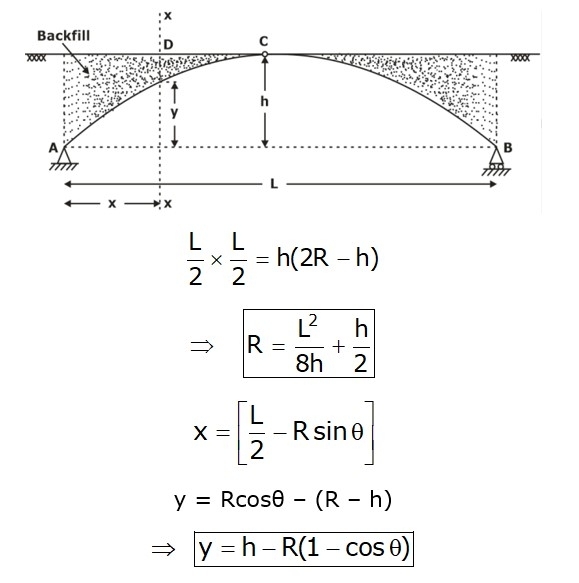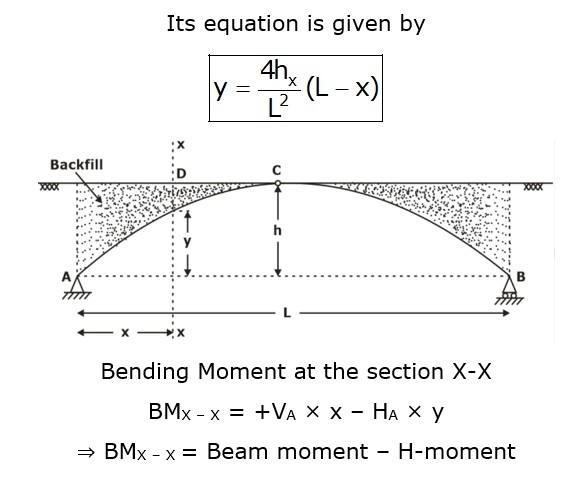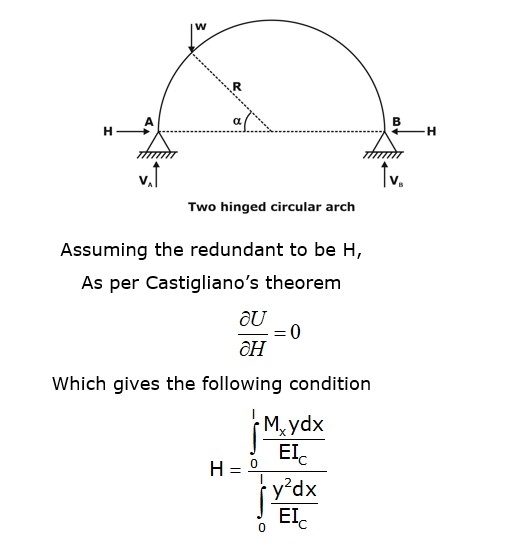Different Types of Arches
By BYJU'S Exam Prep
Updated on: September 25th, 2023

Arches are important structures used in civil engineering at many places in construction. Based on the different use of arches and their suitability for the given design condition, they can be classified into different arches. Arches have different meanings and strengths for the different types of arches.
Types of Arches PDF [GATE Notes]
Various types of arches are used in construction for different purposes. Different types of arches can also be classified based on the material used to design arches. In this article, various types of arches are discussed in detail from various perspectives.
Download Formulas for GATE Civil Engineering – Structural Analysis
Table of content
Types of Arches
Different types of arches can be classified based on their shape, material used, number of hinges, etc. Based on the shape of the arches, they can be classified into circular arch, parabolic arch, semi-circular arch, Flat arch, segmental arch, horseshoe arches, etc. The materials used for the construction can be classified as Stone arches, Ashlar arches, Rubble arches, etc.
Based on the number of hinges, Arches can be classified as three and two-hinged arches. These arches are used in the structure based on their requirement. Three-hinged arches are the determinate structures, while two are the indeterminate ones. These types of arches will be discussed further in this article.
Download Formulas for GATE Civil Engineering – Environmental Engineering
What are Arches?
Arches are the structures used in the world of construction. Uses of arch structures have many advantages in the construction sector. An arch structure can resist its dead weight due to its proper design. Arch structure induces a negative bending moment, which helps to counteract the effect of external load acting over it. In an arch structure, some normal thrust, shear force and bending moment act on a particular section. Here a typical arch bridge structure is shown below.

Different Types of Arches in Houses
In houses, arch structures are used to transmit loads from above structures. Arch structures are preferred due to their advantages. House arches can be provided based on their shape and suitability of use at the given condition of structures.
Flat arches, Segmented arches, Semi-circular arches, Horse Shoe arches, Elliptical arches, etc., can be used to construct house structures. These arches are used in the construction of houses based on their suitability and effectiveness of this. Some other types of arches can also be used to design houses.
Download Formulas for GATE Civil Engineering – Fluid Mechanics
Types of Arches Based on the Shape
Arches can be classified based on their shape, size, number of hinges used, etc. So, based on the number of hinges available in the structure, it can be classified as three hinged arch or two-hinged arches.
These two types of arches can be further classified based on their shapes, which may be circular, parabolic or elliptical shapes. These shapes can be used in structure based on the loading criteria and suitability for the construction.
Three Hinged Arches
The three hinged arches are statically determinate structures, as equilibrium equations alone are sufficient to find all the unknown quantities. These arches are analysed based on the shape of the arch structures. Here analyses for the circular and parabolic arch are given below.
Circular Arch
From the property of a circle, the radius r of the circular arch of the span L and rise h can be calculated. Taking origin at A, the coordinates of any point d on the arch may be defined as

Parabolic Arch

Compared with a beam of similar span, bending Moment at any section in a three-hinged arch is less by an amount of ‘H×y’ or Moment due to horizontal force.
Two Hinged Arches
A two-hinged arch is an indeterminate arch. The horizontal thrust in such arches can be determined using Castigliano’s theorem of least energy.

Where
Mx = beam Moment at any section x – x
IC = Moment of inertia of the arch cross-section at the crown.
(i) Horizontal Thrust in case of circular arch subjected to point load
H = (W/π) Sin2α
(ii) Horizontal Thrust in case of circular arch subjected to UDL
H = 4WR/3π
(iii) Horizontal Thrust in case of parabolic arch subjected to a point load at the centre
H = 25WL/128h
(iv) Horizontal Thrust in case of parabolic arch subjected to a UDL
H = WL2/8h


